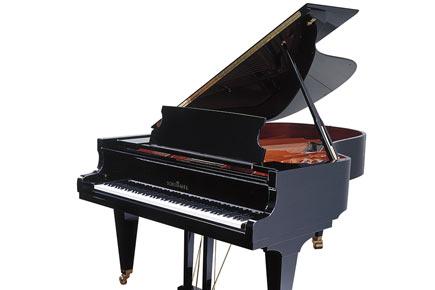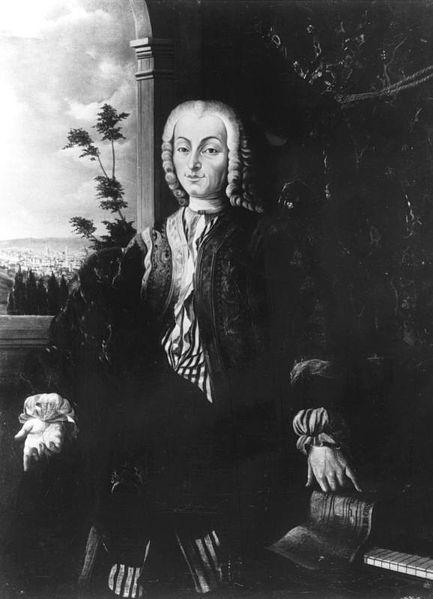On Italian instrument maker and father of the piano Bartolomeo Cristofori's birth anniversary we look back at how his most significant contribution to the music world came into existence...

Bartolomeo Cristofori, Bartolomeo Cristofori's death anniversary, piano, modern piano, father of the piano, the piano's invention, Medici family, Ferdinando de' Medici, Grand Prince of Tuscany, musical instruments
The word piano is an abbreviation of the term pianoforte, which in terms derives from the terms gravicembalo col piano e forte and fortepiano borrowed from the Italian musical terms piano and forte meaning soft and strong respectively.
Bartolomeo Cristofori is generally credited as the inventor of the modern piano. He was employed as the Keeper of the Instruments at the court of Ferdinando de' Medici, Grand Prince of Tuscany. An expert harpsichord maker, Bartolomeo Cristofori was well acquainted with the body of knowledge on stringed keyboard instruments.

An undated portrait of Bartolomeo Cristofori
The exact date of the piano's invention by Bartolomeo Cristofori remains disputed to this day. The Medici family's inventor (Cristofori's employers) indicates the existence of a piano by the year 1700; another document of doubtful authenticity indicates a date of 1698. The three Cristofori pianos that survive today date from the 1720s.
Bartolomeo Cristofori initially named his instrument, un cimbalo di cipresso di piano e forte ("a keyboard of cypress with soft and loud"), abbreviated over time as pianoforte, fortepiano, and simply, piano. It was too quiet for large performances despite the clavichord allowing expressive control of volume and sustain. While the harpsichord produced a sufficiently loud sound, but offered little expressive control over each note the piano offered both, combining loudness with dynamic control.
ADVERTISEMENT
 Representational picture
Representational picture
Bartolomeo Cristofori succesfully solved the fundamental mechanical problem of piano design. The hammer must strike the string, but not remain in contact with it (as a tangent remains in contact with a clavichord string) because this would damp the sound. Moreover, the hammer must return to its rest position without bouncing violently, and it must be possible to repeat a note rapidly. This became a model for the many approaches to piano actions that followed.
Cristofori's early instruments were made with thin strings, and were much quieter than the modern piano, but much louder and with more sustain in comparison to the clavichord—the only previous keyboard instrument capable of dynamic nuance via the keyboard.
Bartolomeo Cristofori's piano remained relatively unknown until an Italian writer, Scipione Maffei, wrote an article about it in 1711, including a diagram of the mechanism, that was translated into German and widely distributed.
Organ builder Gottfried Silbermann, who was one of the aspiring piano builders to have read this article built virtually direct copies of Cristofori's, with one important addition: he invented the forerunner of the modern sustain pedal, which lifts all the dampers from the strings simultaneously.
Silbermann showed Johann Sebastian Bach one of his early instruments in the 1730s, but Bach did not like it at that time, claiming that the higher notes were too soft to allow a full dynamic range. Although this earned him some animosity from Silbermann, the criticism was apparently heeded. Bach did approve of a later instrument he saw in 1747, and even served as an agent in selling Silbermann's pianos.
Piano-making flourished during the late 18th century in the Viennese school, which included Johann Andreas Stein (who worked in Augsburg, Germany) and the Viennese makers Nannette Streicher (daughter of Stein) and Anton Walter. Viennese-style pianos were built with wood frames, two strings per note, and had leather-covered hammers. Some of these Viennese pianos had the opposite coloring of modern-day pianos; the natural keys were black and the accidental keys white.
Wolfgang Amadeus Mozart composed his concertos and sonatas with such instruments. Replicas of them are built today for use in authentic-instrument performance of his music. The pianos of Mozart's day had a softer, more ethereal tone than today's pianos or English pianos, with less sustaining power. The term fortepiano is now used to distinguish these early instruments from later pianos.
 Subscribe today by clicking the link and stay updated with the latest news!" Click here!
Subscribe today by clicking the link and stay updated with the latest news!" Click here!







